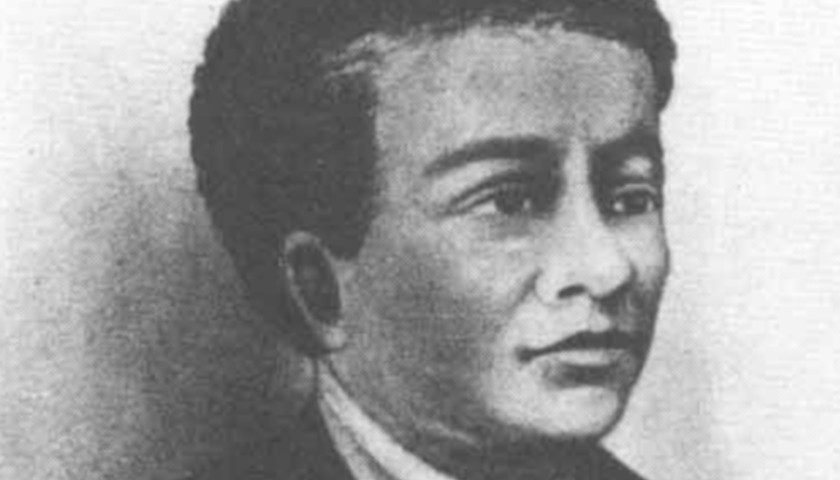Benjamin Banneker was much more than just an inventor. As a mathematician, astronomer, landowning farmer, writer, and surveyor, Banneker was one of the most influential African Americans alive during America’s infancy.
He was born a free man on November 9, 1731 to parents Mary and Robert Bannaky in Baltimore County, Maryland. Banneker was one of 200 free blacks in a population of 4,000 slaves and 13,000 whites. When he was six, his parents purchased a 100-acre plot of land in the Patapsco River Valley of rural Baltimore County and listed their son as a co-owner on the deed so that he could maintain his freedom his whole life, according to the Benjamin Banneker Historical Park and Museum.
Most of Banneker’s formal education was provided by his grandmother, Molly Welsh, a white English woman who was sentenced to indentured servitude in the thirteen colonies when she was falsely accused of steeling milk. Welsh served her punishment and managed to produce the funds to purchase land for a farm near the Patapsco River, the Biographical Encyclopedia of Astronomers notes.
Banneker began working on the family’s tobacco farm around the age of 15 and is said to have invented an irrigation system that allowed the farm to flourish during periods of drought. As a young boy, Banneker developed a love of reading and was “particularly fond of mathematical puzzles,” according to Banneker biographer Silvio A. Bedini.
When he was 22, Banneker demonstrated his advanced understanding of mathematics when he built a wooden striking clock based on his own drawings and calculations. He had studied the “gears of a pocket watch to master the mechanics,” according to an essay on his life published by the White House Historical Association. The clock kept perfect time for the next 50 years and Banneker received a number of visitors curious to see his invention.
The middle of his life was consumed by work on the farm, especially after the death of his father in 1758. But in 1771 the Ellicott family moved from Pennsylvania to Maryland and built a gristmill near Banneker’s farm. Banneker developed a friendship with the family, particularly with George Ellicott, who introduced Banneker to the science of astronomy and lent him some of his instruments.
Banneker began calculating his own ephemeris, which included predictions for “lunar and solar eclipses, the northing and southing of celestial bodies, and other events in the cosmos,” according to the Maryland Historical Society.
In 1792, Banneker began publishing his own almanac, called the Pennsylvania, Delaware, Maryland and Virginia Almanack and Ephemeris. He produced the publication every year until 1797 and it became a bestseller. Along with Banneker’s astronomical predictions, the almanacs contained essays, math puzzles, and proverbs and were an important tool for farmers.
Shortly before the first year of publication, Banneker sent a letter and a copy of his almanac to Thomas Jefferson, then the secretary of state. In the letter, Banneker challenged Jefferson on his claims about the mental inferiority of African Americans, which Jefferson expressed in his 1788 Notes on the State of Virginia. Banneker pointed to his own accomplishments and capabilities as evidence to the contrary.
“Sir, suffer me to recall to your mind that time in which the arms and tyranny of the British Crown were exerted with every powerful effort to reduce your country to a State of Servitude. Look back I entreat you and you cannot but acknowledge that the present freedom which you enjoy you have mercifully received and that it is the peculiar blessing of Heaven. This, sir, was a time in which you clearly saw into the injustice of a state of slavery,” Banneker wrote in his letter.
Jefferson replied some 10 days later and said he was passing the almanac along to the Secretary of the Academy of Science in Paris “because I consider it a document to which your whole colour have a right for their justification against the doubts which have been entertained in them.”
Meanwhile, Major Andrew Ellicott, George’s cousin, had been appointed by Jefferson to conduct a survey of the new Federal Territory, later renamed the District of Columbia. Ellicott needed “an assistant who had practical knowledge of astronomy and was familiar with the use of instruments,” Bedini writes. After much consideration, Ellicott selected Banneker to assist with the survey of the nation’s capital. Banneker spent three months helping Ellicott and was responsible for making the daily calculations necessary to conduct the survey.
“Ellicott is attended by Benjamin Banneker, an Ethiopian, whose abilities, as a surveyor, and an astronomer, clearly prove that Mr. Jefferson’s concluding that race of men were void of mental endowments, was without foundation,” The Georgetown Weekly Ledger said in an article on the survey.
Banneker, who never married nor had children, died in 1806 at the age of 74. On the day of his funeral, his house burned down along with most of his writings and possessions.
“In many ways, his story is an historical anomaly,” White House Historical Association Fellow Louise Keene writes of Banneker. “He assisted with the initial survey of Washington, D.C., published abolitionist material south of the Mason-Dixon Line, and engaged with some of the country’s founders in a way no black man had before. However, Banneker’s life also reflects the defining paradox of the early United States—a land of freedom and opportunity with insurmountable racial qualifiers.”
– – –
Anthony Gockowski is managing editor of Battleground State News, The Ohio Star, and The Minnesota Sun. Follow Anthony on Twitter. Email tips to [email protected].




